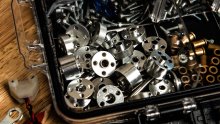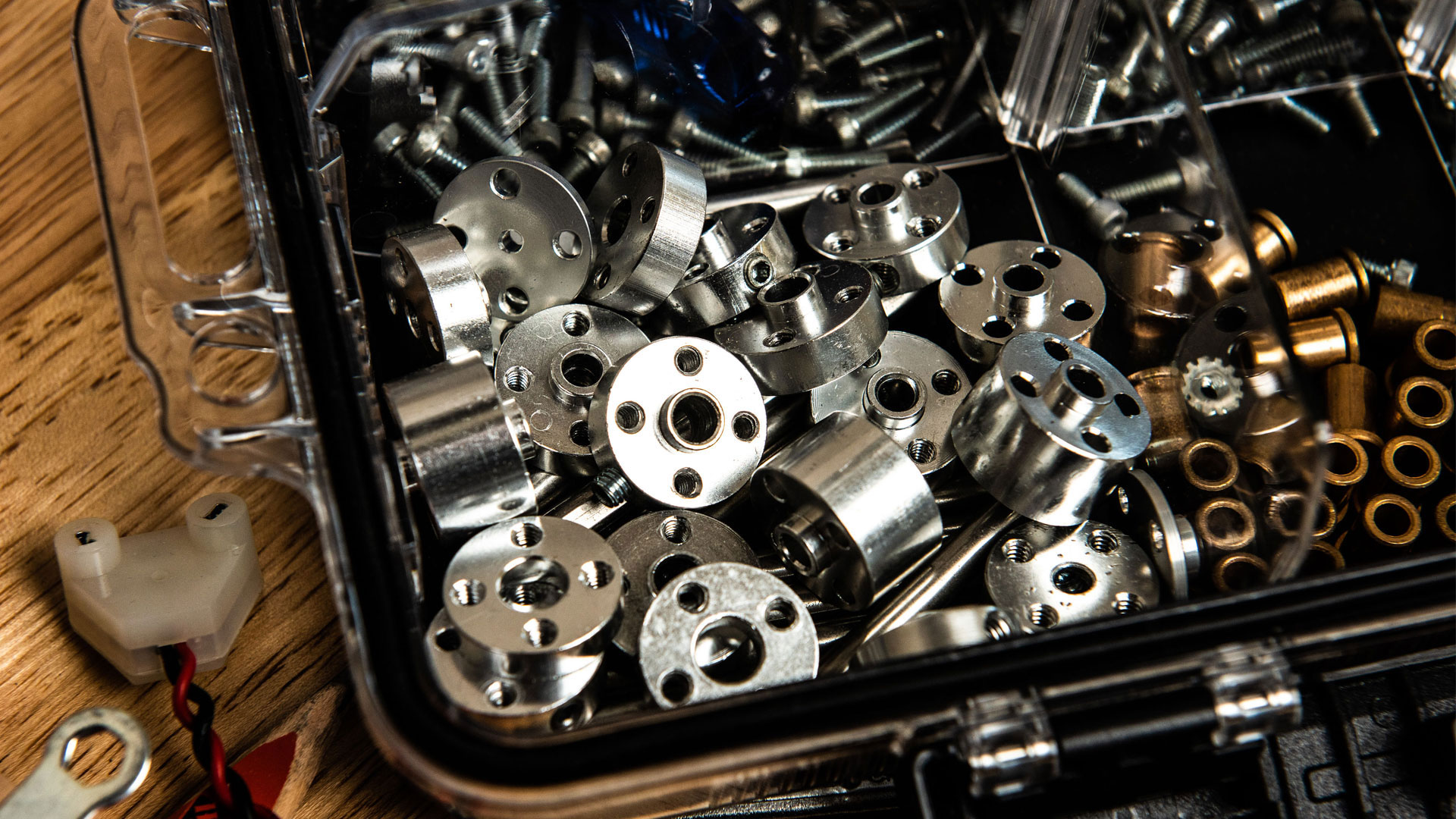

Students in the fall semester’s Foundry course knew they would be taking a class that would combine “engineering skills with creativity and an artistic eye,” as noted in this year’s curriculum guide.
But, thanks to the hybrid nature of the fall semester — with some members of the class taking part on campus for a portion of the fall, while others were participating virtually — the students also learned lessons in harnessing their imaginations, ingenuity, and adaptability.
The Foundry course is the latest in a series of classes offered by the School’s Women In Science and Engineering (WISE) program in collaboration with the Arts Department. The course is taught by Ian Diedrich, the Drama Program’s Technical Theatre Director who has also taught several WISE electives. Ian had proposed the course as a co-curricular elective after undertaking some online research about foundries.
As the curriculum guide noted, the course explores “the age-old craft of foundry and metal casting,” not only through ancient techniques first used by craftsmen 5,000 years ago, but also by using such 21st century technology as 3-D printing and cutting-edge software.
For the elective, Ian brings a wealth of experience and expertise from his two decades of working in technical theatre design and operations.
“There’s a lot of structural engineering, as well as general engineering, used in technical theatre,” Ian noted, as well as a great deal of practical experience “in problem-solving and knowing how to work with a wide range of materials.”
That knowledge and experience came in handy for Ian as he had to adapt his original course plan over the summer to fit into a fall semester when some of the 13 students in his class would be on campus for the class, while others would be connecting through a video feed from their homes around the country and the world.
First, however, Ian had to gain experience over the summer by creating and working with his own homemade foundry. In addition to reading several books on the subject, he also “watched a ton of YouTube videos” in preparation. Though his technical theatre work had given him extensive experience, he said, “I have never done any of this before. So, this summer was really the first time I picked up any of these tools and materials.” As his students work on creating their final design projects, he also will be producing one of his own.
Reflecting on his first experiences with a foundry last summer, Ian said, “there is something very ancient and wondrous about it. The material gets red hot. If you are working with it at night, it just glows.”
In the first sessions of the course, Ian led his students through an overview of the different kinds of furnaces that have been used in foundries, as well as the physics at work in the process and the design techniques used to create the molds. He constructed and demonstrated homemade furnaces using different building materials, such as sodium silicate, and sources of fuel, such as propane and coal. These were capable of producing heat at temperatures high enough to melt aluminum and other metals to use with molds.
In addition, Ian demonstrated more contemporary techniques for foundry work, introducing his students to Tinkercad, an online 3-D modeling program that runs on a web browser. This software has allowed the students to develop designs for the molds that Ian will help them with by transforming their final design project casts into aluminum.
Because of the pandemic, Ian noted that his students have had to use their imagination to find materials to use as they assemble their designs for the molds. “It can be a multi-step process for them,” he explained, “where there is a lot of fine-tuning and tweaking to get it right.”
But even if the pandemic weren’t happening, Ian said, the students would still face complications in working on their designs. “This is one of those learning processes where it is all trial-and-error. The challenges are just there.”
While “it is something that is accessible, easy to understand, and not all that complicated,” Ian explained, “there are just so many parts to the process. The set-up is hard and the execution is hard. So, you may fail at first and then have to go back to the beginning.”
The students have impressed Ian with the range of imagination they have shown in creating their molds. Senior Sabina Wilson, for example, is creating a female tarantula — “which she has named Frank,” Ian said with a laugh — that is a lifelike replica of the spider. Sabina has been using 3-D modeling to create each of its eight legs as separate pieces that will need to be fitted just so into insets in the spider’s body.
For senior Amy Selenica, the Foundry course was an opportunity to experience both the engineering elements of WISE and the creative aspects of art.
“Although I am very happy with my choice to be in WISE,” Amy explained, “it is often difficult to take an art class within the schedule. I am always very excited whenever WISE courses incorporate art, and having Ian teach made the class even more interesting. I have had the most fun learning how to use a drill and developing my skills with tools.”
“I think that the art aspect fits in perfectly with this WISE course,” Amy added. “We could very easily be molding other things that we haven’t designed, but by incorporating Tinkercad and our 3-D printer, our work becomes much more meaningful. Art often depends on math and science, so this course and other WISE classes I have taken in the past have naturally incorporated the arts, even when not intended.”
As a day student, Amy said that she appreciated the hands-on elements of the course during the first months of the semester. “I had never used drills or saws before, and these things intimidated me at the start of our class. Ian was very patient with all of us, and with help from him and Sabina, I became a lot more confident using those once-foreign tools.”
Amy, who is designing and creating a skate ornament for her final project, agreed with Ian about the trial-and-error elements of the creative process.
“Creating 3-D designs has been one of the most challenging aspects that I have had to deal with in the course,” Amy said. “I had to learn that just because something is designed on Tinkercad doesn’t necessarily mean that it will be executed as intended once we print it out.”
“This was also my first time working with the 3-D printer,” Amy added, “and there were things I didn’t expect to have problems with, such as scale. But the more we work with it, the easier it gets.”
Amy also appreciated “the flexibility Ian has had with our course. During an intense academic day, it has been relaxing to get creative and use my hands during Foundry. I think this class is the best way for me to complete the WISE program.”
Senior Irene Kim had not originally intended on taking the Foundry course as a WISE elective, but grew more interested “because it was one of our newer WISE/Art offerings. Now, I am glad I took this elective because I am thoroughly enjoying it.”
Taking the course remotely from her home in Korea, Irene acknowledged, has required some adjustments on her end.
“Having to take these kinds of courses online definitely require more independence,” she explained. “Sometimes, materials available in the States weren’t necessarily so easily available in Korea, so I’ve learned to be flexible and creative with my work.”
Another challenge, Irene added, was that some aspects of the work that she and her classmates are attempting — such as creating molds out of silicone — “were very new to me and quite challenging to master. It definitely would have been smoother if I had been in the classroom to ask for some help, but obviously, that was not the case. I’ve now mastered mold-making, though!”
And though Irene is half a world away, her final project will definitely connect her to the School — she is designing and recreating a Westover Lantern.
Reflecting on how the Foundry course has come together, Ian said, “At the end of the day, I just want this to be fun and a little bit of exciting, and I want my students to get something out of this new experience.”
Because of the pandemic, Ian added, “the class did not go as we had envisioned, but I think they are learning a lot, they will be producing something from all their work, and they are having a good time doing it.”










